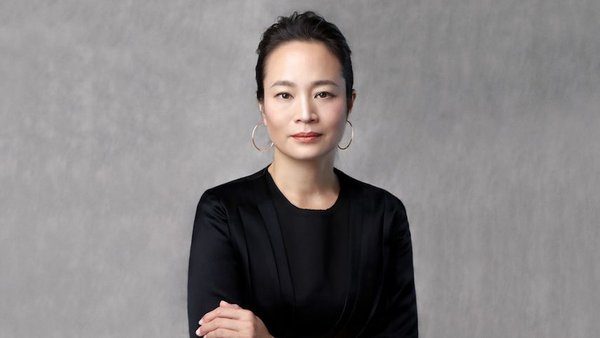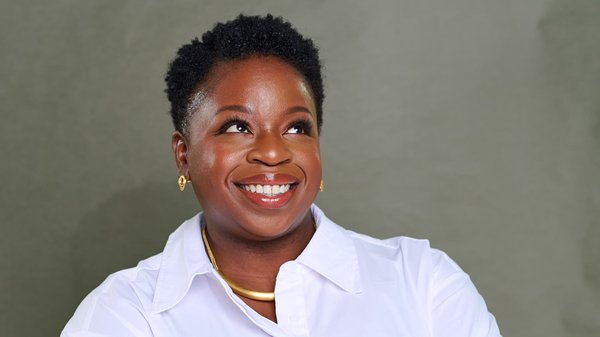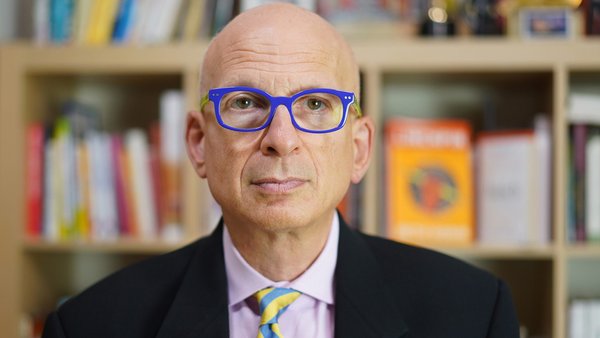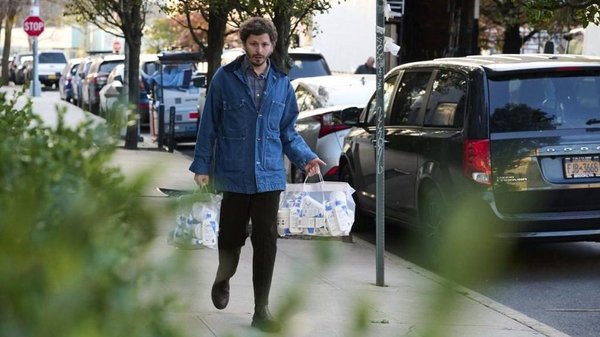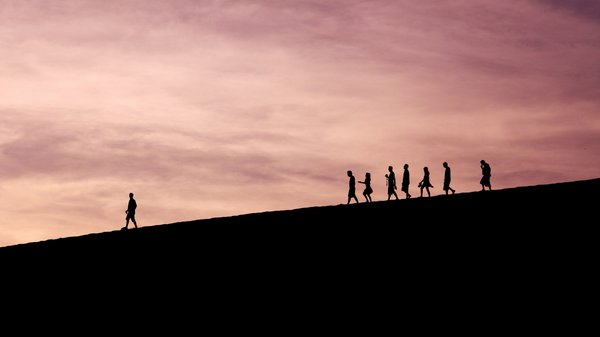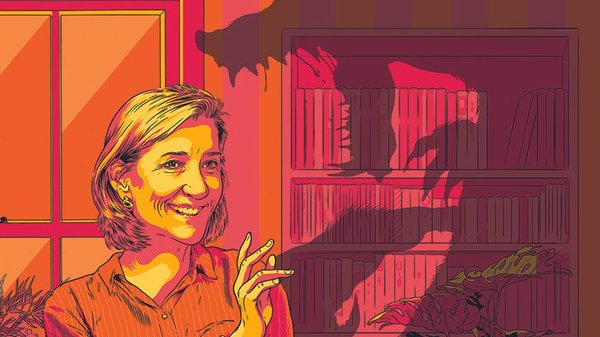Cannes Lions Luxury president: ‘Why should craft only be for luxury? Everyone should be entitled to the delight of craft’ /
LVMH global brand officer Mathilde Delhoume-Debreu on the balancing act that keeps luxury brands at the heart of culture, influence and desire

Fresh from winning the Grand Prix for Luxury at the Cannes Lions 2025, Mathilde Delhoume-Debreu, global brand officer at LVMH, sat down with Contagious to discuss the daily challenges of keeping timeless brands on their toes and true to themselves.
As president of the Luxury jury, Delhoume-Debreu had to recuse herself while the final phase of judging took place, but The Partnership that Changed Everything – an exquisitely executed campaign to embed LVMH’s storied brands at the heart of the Paris Olympics – emerged victorious.
While conventional sports sponsorship often boils down to beer, badging and brightly coloured merch, the LVMH interpretation was a lesson in savoir-faire, soft power and national pride. This may sound remote from the cut-end-thrust of everyday marketing, but with 30 years at Procter & Gamble under her belt, Delhoume-Debreu brings perspective and experience from both ends of the marketing to a conversation that spans craft, creativity and ‘the disease of collaboration’.
The LVMH Olympics campaign is almost like sponsorship by stealth: tell me about the strategy and thinking behind that approach?
Approaching it as a normal sponsorship – could you imagine athletes with Dior, Vuitton [on their kit]? – it’s not even authorised. You cannot bring brands in the sports arena. So a normal sponsorship would make no sense, would not have elegance, and would not fit at all with what LVMH is about. This was about turning the normal and expected into a surprising, amazingly crafted, beautiful experience.
The LVMH mission is ‘Savoir-faire rêvers’ – the art of crafting dreams – and if you think of the Olympics and Paralympic Games, it’s also all about dreams, the dreams of becoming an Olympian. It’s lots of craft and lots of searching for excellence from the athletes, so there was almost a natural fit between both.
What made it so successful?
Creativity and innovation are values of the group and each athlete is always innovating to push their performance, so when you get to this merge of values, you get a multiplier effect.
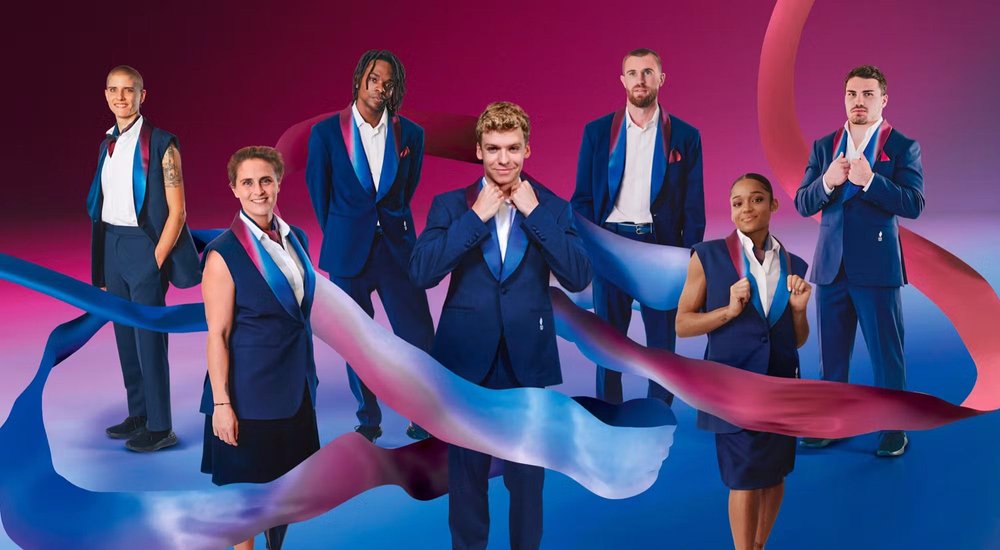
There’s a strong sense throughout the campaign of allowing excellence to speak for itself…
Indeed. We disrupted sports sponsorship, but there were no brand names, just the iconic objects that represent the Maisons and the brand DNA, all placed in a very subtle way.
From Chaumet, the Parisian jeweller, there were medals with a fragment of the Eiffel Tower, and a ‘solar’ look, because the sun is part of Chaumet’s iconic assets. From Louis Vuitton, the fully tailored trunk for the medals, and the Damier canvas-covered presentation trays. Those beautiful uniforms that include the patina of Berluti [appearing on the ombre lapels]. An haute couture dress really capturing the spirit of Dior – and that moment where Celine Dion was on top of the Eiffel Tower in this handmade dress… honestly, I think we all cried.
Mathilde Delhoume-Debreu, LVMH
In the press conference you spoke about the importance of being at the heart of the biggest moment in culture in 2024 for LVMH. But how can luxury brands maintain that cultural relevance 24/7, year after year?
I think we need to be careful. We do not need to be in every event. We need to be very careful about the ones that are right for our company, for our brands. And I go back always to the DNA and the values.
We should not jump on an event because it’s big. It’s about asking why do you want to be part of this event? Why is it going to create this multiplier effect? As a jury we saw lots of what we call ‘the collaboration disease’, people thinking that collaborating with another brand would take them to the next level.
Yes – if the combination of your value takes you to a greater destination. No, if it is just sticking the name of each other onto the first brand. This is not about borrowed interest. It’s not about ‘piggybacking’ onto each other. In all the long-lists that we reviewed, we really looked at this piggyback approach, and we asked ourselves are they enriching each other, or are they just borrowing from each other? That was a really easy one to decide.
There is a perception that luxury advertising is a little bit different to advertising for more everyday goods. Is there a distinction?
Having worked for 30 years in FMCG and with LVMH for almost nine, I think I can talk a bit about that! In FMCG, we solve problems. We answer consumer needs the best we can. In luxury, we don’t solve problems. We create desire, right? So it’s all a story about problem-solving versus desirability.
So how do you create desire? By creating this emotion that says, I desire this product, not I need this product. It’s not function, it’s emotion. So that’s one big difference, a difference in the outcome you want to create.
Then, of course, it’s craft. In FMCG I was always told, ‘Mathilde, you are too perfectionist. You should go for the 80/20 [also known as the Pareto Principle, where 20% of input creates 80% of outcomes]. In luxury, if you go for the 80/20, you are out of the door the next morning, because it needs to be perfect, and even beyond perfection in every single thing. The clients expect this ultimate perfection and we cannot let them down.
This is why I say craft is at the core. When it comes to product, craft is about the ultimate exceptional materials, the utmost attention to details. And it’s the same thing in communication: 80/20 doesn’t cut it.
So how does that perfectionism translate to luxury communications?
Well, it’s why we talk about desirability, we talk about craft, and we talk about creativity: it’s about each time bringing something new, each time surprising the customer, while staying true to the DNA. Whereas in fast moving consumer goods, you have lots of continuity and staying true to the DNA, but you don’t try to surprise, because by surprising you may lose your consumer: they expect a certain functional benefit, and you cannot deviate from this, whereas, if you want to create desire for handbag, you need to surprise.
The Loewe x Suna Fujita collaboration from last year [winner of the first-ever Cannes Lions Luxury & Lifestyle Grand Prix] was all just exquisite little surprises, from the product to the moment you were going in the boutique, to the moment you were talking to the sales assistant, and the moment you went out with your wonderful embroidered shirt or bag.
It’s the same thing for the facade of a boutique. At the 30 Montaigne [flagship store] of Christian Dior for the holiday season, there were traffic jams because people were watching the whole facade being animated. You’re creating a suspended moment in time, where you admire beauty, where you create surprise, where you elate and elevate your whole day.
Or think of all the trunks at the crossroads between Fifth Avenue and 57th [in New York] at the Louis Vuitton store [currently under renovation behind scaffolding disguised as monumental, storeys-high Vuitton luggage]… They are gorgeous, but we’re creating surprise while staying true to our DNA, while being relevant, while being deep. It’s not about something superficial.
Can FMCG learn something from the world of luxury – or vice versa?
I used a lot of what I learned on FMCG when I arrived [at LVMH]. The love for brands is something in common at most of the FMCG companies and at LVMH: there is a love for the brand, or for the Maisons, as we call them here.
And there are things that go deeper in luxury about the Maison, because you need to understand all the ‘imaginaires’ that are associated with your Maison that help you to always renew and reinvent and not just do cut-and-paste of the same thing.
Can you explain what you mean by ‘imaginaires’?
It’s the different basic narratives that are associated with each brand. You should not have too many, but each brand carries a few narratives that come directly from their DNA, and that allow them to renew the creativity all the time. In fast moving consumer goods, you have what they call iconic assets, [the things that] make your brand recognisable. At Coca-Cola, you have the red and white. You have the Spencerian logo and you have the shape of the bottle, and this can be cut and pasted everywhere with no imaginaire… But the imaginaires that allow luxury to be always reinvented would also help the fast moving consumer goods to disrupt, so I think this is one transfer.
And then, I’m sorry, but why should craft only be for luxury? Because when you are just focusing on functional and a little bit higher-order needs in FMCG, craft is even more important. Craft is a delight. Everyone should be entitled to the delight of craft. And when it comes to communication, I think FMCGs should step up their game in terms of obsessing the craft.
Luxury was famously slow to embrace the opportunities of digital, but a lot of ground has been made up. How has luxury communication has evolved across the last 10 years?
I don’t see as a question of speed of adoption, I see it as a question of relevance of adoption. It’s not about being the first, it’s about being the best and the deeper at doing it. The world has always been changing, from Gutenberg to press to radio to television: the changes just get faster.
We have brands that date back to 1365 – [the vineyard] Clos des Lambrays is the oldest, but all our brands have thrived through time, and most of them are more than 300 years old. Monsieur Arnault, the chairman and owner of this company, always tells the story of how one day he was drinking champagne with Steve Jobs, and Steve told him that ‘100 years from now, probably the iPhone will no longer exist, but I’m sure people will still drink Dom Perignon’.
So I think this is about the timelessness of our brands that needs to fit with the reason of communication, and we need to make sure that we are the trustees of this timelessness in the way we communicate, content-wise and media-wise.
To support an idea you have and to show people what is possible, you do it very quickly with AI, then after, when you bring it to life, this is where craft keeps the human at the centre
Mathilde Delhoume-Debreu, LVMH
The growing role of creators and influencers has been a key theme at the Festival this year – how does that impact the world of luxury?
In fact, this circle of influence has three components. The Maisons of luxury are themselves a huge influence. A lot of people watch Dior, watch Vuitton – look at the level of buzz around the fashion shows – they invent, they create a product, they create a vision, they are the ultimate creators. So they have a huge role to play.
Then you have the thought leaders – with a big ‘L’ – the experts that have been around their category for many years. These wine testers, the chefs of the world, the fashion editors, they know their stuff, have a feel for it, and they are able to bring an acute vision to it, and they are Influence.
And the last component is the influencers and the creators. They are just closer to you and I, and they have a different voice of influence by their proximity. For us it’s like an orchestra: we need to be able to play the orchestra, and sometimes it will be a symphony, and sometimes it will be a bit more jazz-like but we need to create this harmony by playing those three voices of influence.
There is a space for everyone, as long as we understand the role of every voice. If you look at the Loewe TikTok campaign for example, [you can see] how Loewe is using creators to communicate the Loewe narrative, using each creator to reinterpret them. It’s very well done.
The other big conversation at the festival has been about AI: where do you see the opportunities, or perhaps the threats around AI, for businesses like yours?
For luxury, it’s pretty simple. The human is at the centre. Human creativity is at the centre of everything we do, products, services, communication. AI is a tool, and I felt this year a much more peaceful approach to it, with people realising that if we put the right guidelines and the right ethics around the use of AI, this is a fantastic tool.
And we need to know where AI will be good and where its limitations will be. I still think that when it comes to the spark of the creative idea, it has to remain very human. The ability to make connections – not based on a past data set, but like brain synapses that just connect two things that are unconnectable by any other kind of way – that is what is magic and what currently the human brain, the human soul is better at doing.
For luxury and for LVMH in particular, we are embracing AI as a tool of effectiveness and efficiency. Even when it comes to ideation, it’s your best assistant. In the past, to do a mood board, it would take you three months and you would go back and forth and torture interns and assistants until you find the right picture. Today, to support an idea you have and to show people what is possible, you do it very quickly with AI, then after, when you bring it to life, this is where craft keeps the human at the centre.
With craft and artisans embedded at the heart of luxury, are you insulated from some of the less positive impacts of AI?
We are safer in some ways, but we are not that safe when it comes to IP rights. There is so much creativity in luxury. How do we protect this creativity from being stolen by AI and reused and mashed up so that you don’t know if it has been created by a Maison’s artistic director, or borrowed and stolen by AI for a non-brand?
We are so respectful of human at the core, but we love innovation also. For now it is working pretty well, but it’s learn and grow: there will be growing pain, and we will learn, and we will push the boundaries and we will come back. This is how it works. But, beyond that, the threat comes from the outside.
There’s a lot of talk about the 1% and the very large gap between the people with the most and the people with the least. Is that something that impacts on how you do the work of communicating luxury brands?
It does. There is a rule of thumb: it varies, but we call it the 4/40 and it means that 4% of our clients may make up about 40% of our revenues. That still means that around 60% of the revenues are from the 96% so you need to talk to the few and to the many.
The way you talk to the few is going to be almost on a one-on-one basis, very dedicated, very tailor-made. And for the many it’s going to be through products that are a bit more accessible, but that will give them an entry door to the brand. So this is how to think about it. I think luxury should, in its communication, communicate the high-end.
If you communicate the dream, the things that are the entry point of the dream will find their way by themselves. If you dream of a brand, or if you dream of the ultimate bag you want to own, you can start with the perfume... If you dream of drinking Dom Perignon one day, you can start with some Moët et Chandon, which is just amazing. You can enter these dreams in different ways.
What is the biggest challenge facing the luxury sector at the moment?
It’s not a challenge, because this is how luxury works, [but it] is, how do I keep on surprising and disrupting things, while staying true to the DNA [of our brands].
We know some competitors that have stretched their DNA so much they have burnt it and, and this is always the balancing act. Every morning we say, ‘Okay, we push, we push, we push. Have we pushed enough? Have we pushed too far?’ This is what is exciting in luxury, the challenge of reinventing ourselves every day without betraying who we are.
Want more of the same? /
We don’t just write about best-in-class campaigns, interviews and trends. Our Members also receive access to briefings, online training, webinars, live events and much more.
